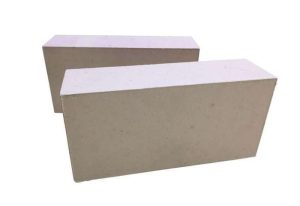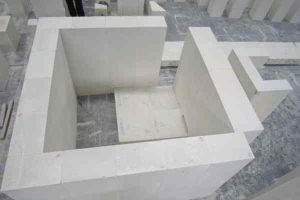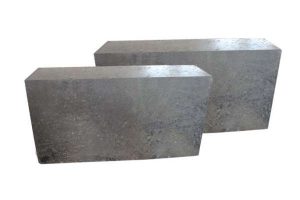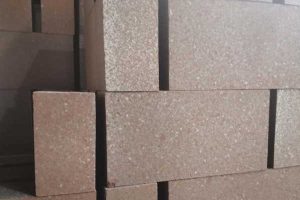Le four varie en taille, qualité, et effet de production en fonction du type de verre produit, et les performances des matériaux réfractaires sont comparées et analysées pour étudier l'efficacité des matériaux réfractaires utilisés. Actuellement, refractories resistant to erosion of high-temperature glass liquor can effectively improve the weak points of the kiln. The following will be analyzed for several typical refractory materials based on this characteristic.
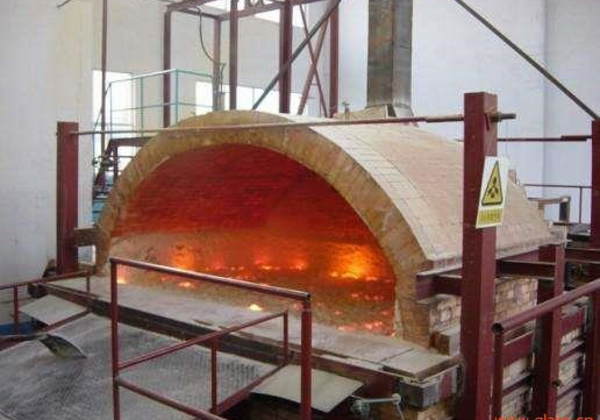
Matériaux de fusion et de moulage
Molten cast materials are distributed in certain ratios and are melted at high temperatures to achieve adequate pouring and ensure the effectiveness of refractory use. The molten cast material consists mainly of alumina, zirconium oxide, and fusion casting material. Parmi eux, zirconium oxide is mainly applicable to the production of electric fusion kilns for specific glasses.
Maintenant, the international fusion casting material mainly uses this kind, which has a strong influence. The refractory products produced by PER refractory company are finished by using a certain ratio of high-temperature material fusion and then realize the molding treatment of refractory products by pouring.
Refractory materials for glass kilns are mainly zirconium corundum, alumine, etc. The main product range of oxidized products is determined by using different spaces of glass liquor adjustment.
Silica Brick Material
Silica brick material is the main refractory product used in glass kilns, mainly for the external flame part of the kiln. La quality of silica bricks used is ensured by their proper operation. Cependant, silica bricks are not very evenly heated, and the non-refractory parts tend to cause a lower service life. Choosing high-quality silica bricks and more heat-resistant refractory materials is a problem that needs to be studied in the glass kiln industry.
Briques à haute teneur en alumine
The main composition of high alumina bricks is also SiO₂ and Al₂O₃, but Al₂O₃ should be more than 46%. It is made of corundum, high alumina bauxite, or silica line mineral (Al₂O₃-SiO₂) comme matière première. The density is 2.3~3.0g/cm³, the apparent porosity is about 18%~23%, and the maximum use temperature is 1500~1650℃. When the porosity of high alumina brick is low, the erosion resistance is better. High alumina brick can be used for masonry cooling section pool walls, heat storage room swan, heat storage room walls, et d'autres endroits.
Magnesium Metal Refractory Materials
La glass kiln uses magnesium metal materials, it’s internally mainly composed of electrofused magnesium bricks, and alloy magnesium bricks, through the heat storage reserve, which improves the dosage standard scale, and enhances the service life of our glass kiln. But the metal will be subject to the temperature of long-term use and consumption, this magnesium metal oxide material in the glass kiln uses the main weak link.
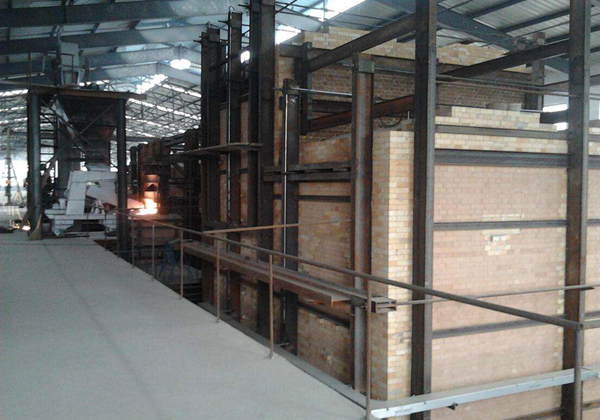
Electrofused Zirconium Corundum Brick
Briques de corindon de zirconium électrofondus, also known as white iron bricks, are generally classified as 33%, 36%, et 41% dans 3 grades according to the content of zirconium in electrofused zirconium corundum bricks. The zirconium corundum bricks used in the glass industry contain 50%~70% Al₂O₃ and 20%~40% ZrO₂. The density is 3.4~4.0g/cm³, the apparent porosity is 1%~10%, the maximum use temperature is about 1700℃, and the zirconium content is 33%, 36% of electrofused zirconium corundum brick. It is used for the masonry of the kiln pool wall, flame space chest wall, small furnace spout, small furnace flat swan, small furnace stack, tongue swan, etc. Zirconium 41% electrofused zirconium corundum bricks are used to build the corners of the pool wall, trou de liquide qui coule, and other parts of the glass liquid on the most intense erosion of refractory materials. This material is the most widely used refractory material for fusion casting in the glass industry.
Electrofused Alumina Brick
It mainly refers to electrofused α, β corundum, electrofused β corundum fusion casting refractory brick, mainly composed of 92%~94% Al₂O₃ corundum crystalline phase, density 2.9~3.05g/cm³, apparent porosity 1%~10%, the highest use temperature is about 1700℃.
Electrofused alumina has good resistance to glass permeation and almost no pollution to glass liquid. It is widely used in the working part of glass melting kilns, such as the wall of the pool, the bottom of the pool, the runner, the wall of the working part of the forehearth, the bottom of the forehearth, etc., which are in contact with glass liquid and require no refractory contamination.
Quartz Bricks
Quartz bricks are mainly composed of SiO₂, which contains up to 99% ou plus, a density of 1.9 ~ 2g/cm³, caractère réfractaire de 1650 ℃, a working temperature of about 1600 ℃, acid erosion resistance, used to build acid boron glass pool wall, flame space thermocouple hole brick, et d'autres endroits.
Alkaline Refractories
Alkaline refractories mainly refer to magnesium bricks, aluminum-magnesium bricks, briques magnésium-chrome, and magnesium-olivine bricks. Its performance is resistant to the erosion of alkaline materials, with refractoriness of 1900 ~ 2000 ℃. It is widely used in the upper wall of the heat storage chamber of the glass melting kiln, the heat storage chamber swan, the grid in the body, the small furnace part of the structure, etc.
Insulation brick for glass kiln: The heat dissipation area of the glass kiln is very large and the thermal efficiency is low, to save energy and reduce consumption, it is necessary to use a large amount of insulation material for comprehensive insulation. Especially in the heat storage room, melting department, work department, and other parts of the pool wall, pool bottom, swan, and wall are to be insulated to reduce heat dissipation. Insulation brick has a large porosity and a very light mass, with a density of no more than 1.3g/cm³.
Since the heat transfer performance of air is very poor, so the insulation brick with a large porosity has a thermal insulation effect. Its heat transfer coefficient is 2~3 times lower than the general refractory material, so the larger the porosity, the better the insulation effect. Insulation brick has many different kinds, there are clay insulation brick, silicon insulation brick, high alumina insulation brick, et ainsi de suite.

